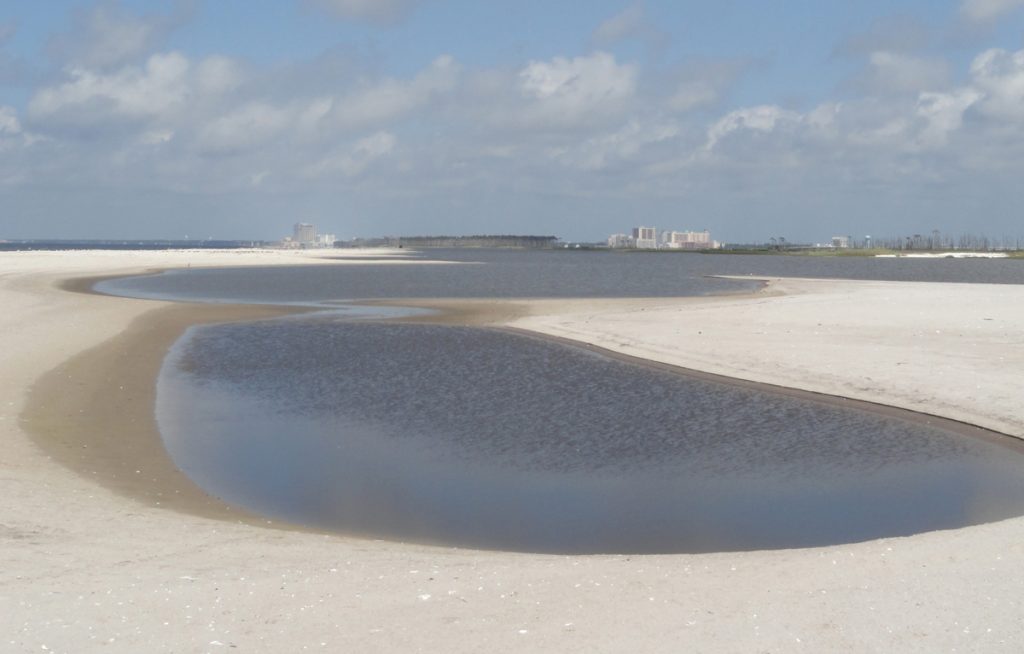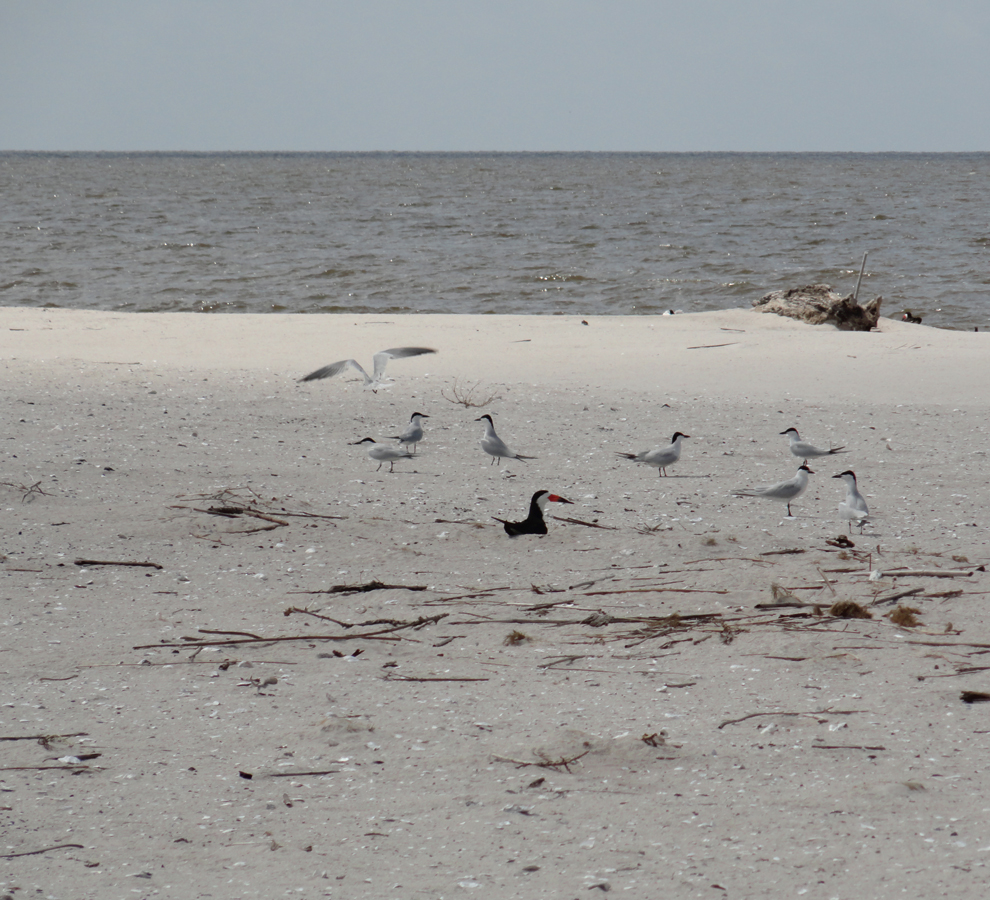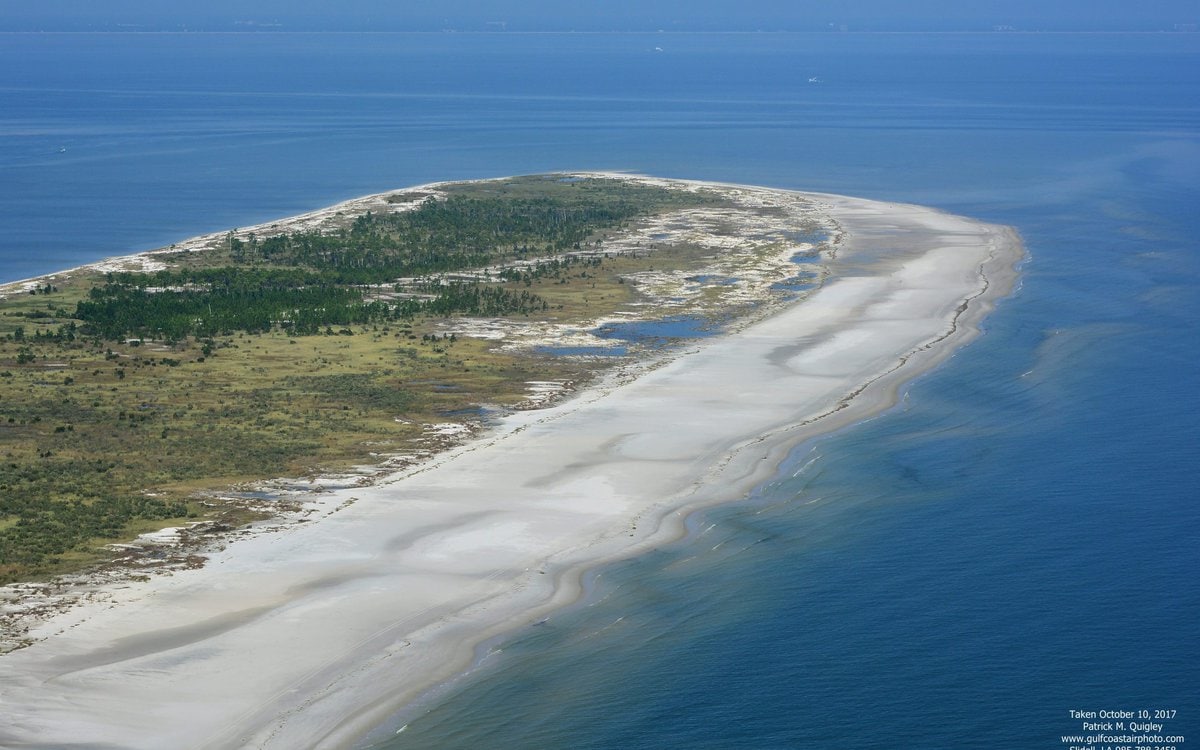This project is featured in Engineering With Nature: An Atlas, Volume 1.
Location: Mississippi Sound, Mississippi, United States.

Located in the Mississippi Sound, Deer Island is a narrow, four-and-a-half-mile-long body of land that protects the city of Biloxi by acting as a buffer for wind and wave energy. In the 25 years preceding the restoration, however, strong storms and hurricanes breached the west end of the island, reduced island elevations so that they were too low to support marsh vegetation, eroded the island’s beaches, and impaired forested areas. The intent of the Deer Island Aquatic Ecosystem Restoration Project (AERP), which was a joint effort by the U.S. Army Corps of Engineers (USACE) Mobile District (SAM), the Mississippi Department of Marine Resources (MDMR), and local stakeholders, was to restore the island and create long-term beneficial use capacity for material dredged from the nearby Biloxi Harbor Navigation Project. Completed in 2013, the Deer Island AERP created approximately 215 acres of new habitat for terrestrial and aquatic species. This project received a Certificate of Recognition as a World Association for Waterborne Transport Infrastructure (PIANC) Working with Nature project, and was also recognized through receipt of the 2013 Western Dredging Association (WEDA) Environmental Excellence Award for Navigational Dredging.
Producing Efficiencies
In the past, different organizations had attempted to fill Deer Island’s west end breach with dredged material and concrete rubble; however, the area continued to breach. For this effort, the project delivery team buried two large geotubes filled with dredged material that was the optimal grain size for site conditions; the team obtained the material from a borrow site nearby. This cost-effective approach to repairing the breach made resources available for an intensive planting effort. On the restored west end breach, approximately 300,000 native grasses, forbs, herbs, vines, trees, and shrubs were planted to enhance the creation of natural sand dunes and to stabilize the island. Along the southern shoreline, approximately 325,000 grasses were planted to stabilize the beach and the marsh areas created by the beneficial use of dredged material.
Using Natural Processes
The restoration design included the creation of a lagoon—about 19,000 feet in length and covering an area of approximately 100 acres—in the area located between the northern limit of the post-project southern shoreline and southern limit of the pre-project southern shoreline. The lagoon was utilized for the beneficial placement of approximately 170,000 cubic yards of fine-grained sediment dredged from the Biloxi Lateral Navigation Channel. Placement of fine-grained dredged material in the lagoon will allow valuable marsh habitat to be created and will build a more resilient shoreline against future storm events. The remaining lagoon area provides an economically feasible placement option for material obtained from future maintenance dredging activities.

Broadening Benefits
The project provided significant environmental benefits for the region. The restored portions of the island provide large colonies of least terns and black skimmers with a sizable increase in nesting and foraging habitat; the restoration also protects valuable foraging and nesting habitat for bald eagles and osprey. The city of Biloxi gained a stronger buffer from storm events; an area better suited for recreation (e.g., for beach going, bird watching, and angling); an increase in related business opportunities for the local community; and a cost-effective and environmentally acceptable beneficial use site for the placement of dredged material.

Promoting Collaboration
The Deer Island AERP was a joint effort by USACE SAM, MDMR, and local stakeholders. Restoration efforts for Deer Island have received multiple lines of support from federal, state, and local levels. The conceptual design incorporated the community’s water quality, safety, and recreation needs. Through a collaborative approach with stakeholders, the team developed solutions for the environmental and resource use challenges traditionally faced in this area.
This project also attracted significant, fortuitous publicity from local television and newspapers when a loggerhead sea turtle nested on the restored southern shore of the west end breach—the first time in 20 years a sea turtle nesting event took place on any Mississippi beach—and her hatchlings emerged shortly thereafter.



